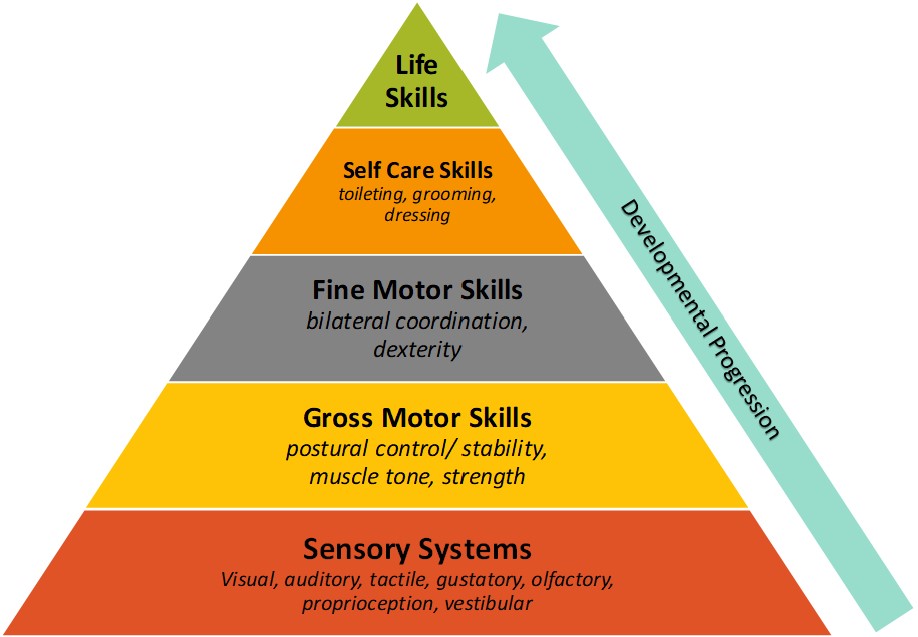Gross Motor Development
Gross motor skills involve performing functional activities through large movements that incorporate the entire body. These skills are fundamental, not just for play and physical activity, but also for:
- Developing competence in dressing tasks (e.g. putting on pants)
- Strength and endurance
- Participation in fine motor tasks

The foundations for gross motor development include muscle tone, strength (of the upper limbs, trunk and lower limbs), postural strength, and stability.
Muscle Tone
Children with Down syndrome exhibit low muscle tone, where muscles have less tension and feel “floppy.” Muscle tone enables us to hold our bodies in different positions. A child with low muscle tone may need to exert more effort when performing an activity to activate their muscles. As a result, they may have difficulty maintaining their postural stability and fatigue faster due to the extra effort required.
Strength
Children with low muscle tone often display decreased muscle strength, decreased activity tolerance and endurance, and a rounded shoulder posture. These physical factors contribute to a reduced ability to sustain a proper posture to meet the demands of an activity. A stable support base is necessary to facilitate hand function for fine motor tasks.
Hypermobility
Hypermobility is another component of low muscle tone, when the ligaments that hold the joints together are slack and easily stretched. This allows excessive flexibility and range of movement. Flexibility in the joints limits a child’s control over their movements. This can make it difficult to support themselves, as hyper-flexible joints are harder to stabilize.
Postural Control
Low muscle tone, decreased strength, and hypermobility contribute to reduced postural control. For children with Down syndrome, these physical factors make it more difficult to stabilize and meet the demands of an activity. The large muscles of the shoulders, neck, and trunk work together to keep us in an upright position for sitting and standing. A stable base of support allows one to coordinate the effective movement of the arms, hands, and fingers. Supported seating is central to facilitating fine motor skills for children with Down syndrome (see positioning handout below in DSRF resources).
At DSRF, occupational therapy can help develop your child’s gross motor skills and facilitate supported positioning based on your child’s unique needs. Gross motor skill development focuses on the core strength and shoulder stability required for participation in functional fine motor skills at school, at home, and in the community.
DSRF Resources
Strategies to Support Children with Down Syndrome in the Classroom
Video: Motor Development and the Importance of Positioning
Other Resources
Gross Motor Skills for Children with Down Syndrome, by Patricia Winders
